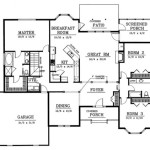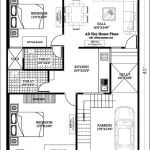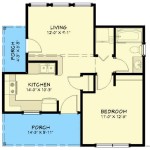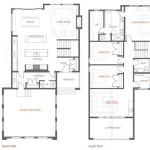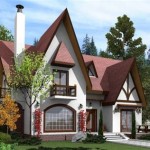Essential Aspects of Designing In-Ground Home Plans
In-ground home plans offer a unique and sustainable way of living. When designing an in-ground home, it's crucial to consider various factors to ensure a comfortable and functional living space. Here are some essential aspects to keep in mind:
Site Selection and Topography
The site selection for an in-ground home is paramount. Look for a well-drained, level area with minimal slope. The topography of the land will influence the design and excavation process. Steep slopes may require extensive terracing or retaining walls, while flat land allows for more straightforward construction.
Structural Design and Materials
In-ground homes require robust structural designs to withstand the earth's pressure. Concrete and steel reinforcements are commonly used to ensure stability. Consider thermal insulation and waterproofing measures to maintain a comfortable indoor environment and prevent moisture penetration.
Natural Lighting and Ventilation
In-ground homes may present challenges in accessing natural light. Incorporate ample windows, skylights, and courtyards to maximize daylight and create a bright and airy atmosphere. Proper ventilation is also crucial to avoid stale air and ensure a healthy indoor climate.
Energy Efficiency and Sustainability
In-ground homes offer inherent energy-saving benefits due to their thermal mass. The earth's constant temperature helps regulate indoor temperatures, reducing heating and cooling costs. Consider incorporating passive solar design principles, geothermal systems, and energy-efficient appliances to further enhance sustainability.
Water Management and Landscaping
Proper water management is vital for in-ground homes. Efficient drainage systems and waterproofing measures should be in place to prevent water accumulation and potential damage. Consider rain gardens or water collection systems to conserve water. The surrounding landscape should complement the home's design and address issues such as erosion control and drainage.
Excavation and Construction Process
The excavation process involves removing a substantial amount of soil to create the space for the home. This requires careful planning and engineering to ensure safe and efficient excavation. The construction process should follow building codes and regulations to ensure the structural integrity and safety of the home.
Cost and Maintenance
In-ground home designs typically incur higher construction costs compared to traditional above-ground homes due to the excavation and structural requirements. However, they offer long-term energy savings and durability. Maintenance costs should also be considered, including waterproofing, drainage, and vegetation management.

Lovely Underground Home Plans 4 House Homes Earth Sheltered

House Plans How To Design Your Home Plan

Two Y House Phd 2024011 Home Design Floor Plans Double

Floor Plans Types Symbols Examples
10 Small House Plans With Open Floor Blog Homeplans Com

12 Examples Of Floor Plans With Dimensions

House Plan Id 17130 3 Bedrooms 3115 1549 Bricks And 120 Corrugates In Fa3 Modern Floor Plans New Home Design

Monolithic Dome Home Floor Plans Institute

Modern Mountain Home Plan With Ground Floor Apartment 68774vr Architectural Designs House Plans

11 Best Free Floor Plan For 2024

